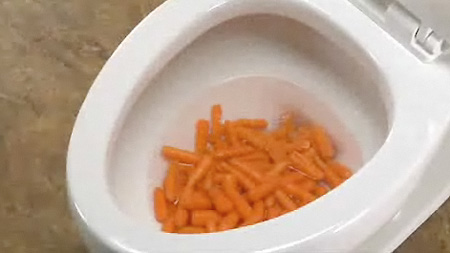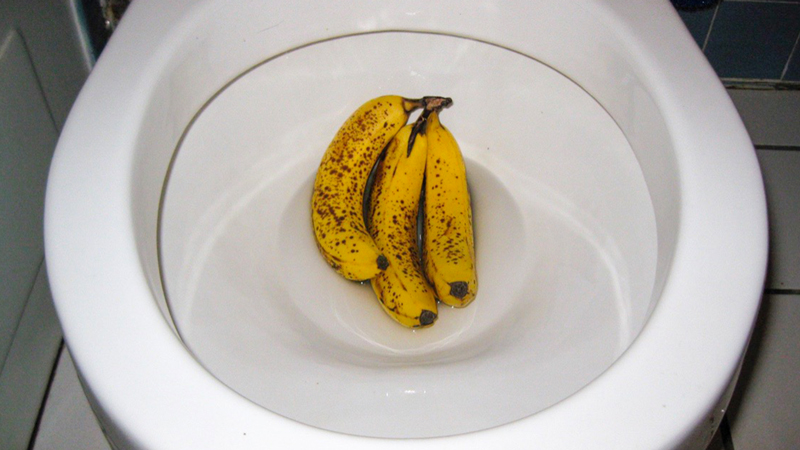Can One to Dispose of Food in the Toilet?
Can One to Dispose of Food in the Toilet?
Blog Article
What are your opinions concerning Flushing Food Down the Toilet??

Intro
Many people are commonly confronted with the predicament of what to do with food waste, particularly when it involves leftovers or scraps. One usual question that occurs is whether it's alright to flush food down the toilet. In this post, we'll delve into the reasons why people could consider flushing food, the effects of doing so, and alternative approaches for appropriate disposal.
Reasons people may take into consideration purging food
Lack of awareness
Some individuals might not be aware of the possible injury brought on by flushing food down the bathroom. They might wrongly believe that it's a safe method.
Comfort
Purging food down the commode might seem like a fast and very easy option to disposing of undesirable scraps, particularly when there's no nearby garbage can available.
Idleness
Sometimes, individuals might merely select to flush food out of sheer idleness, without thinking about the effects of their actions.
Effects of flushing food down the toilet
Ecological effect
Food waste that ends up in waterways can contribute to contamination and injury water communities. Additionally, the water utilized to purge food can strain water resources.
Pipes issues
Flushing food can result in clogged pipelines and drains pipes, triggering expensive plumbing fixings and aggravations.
Kinds of food that should not be purged
Fibrous foods
Foods with fibrous textures such as celery or corn husks can get entangled in pipelines and trigger obstructions.
Starchy foods
Starchy foods like pasta and rice can soak up water and swell, resulting in blockages in pipelines.
Oils and fats
Greasy foods like bacon or cooking oils must never be flushed down the commode as they can strengthen and trigger obstructions.
Appropriate disposal approaches for food waste
Making use of a garbage disposal
For homes furnished with waste disposal unit, food scraps can be ground up and flushed via the pipes system. Nonetheless, not all foods appropriate for disposal in this fashion.
Recycling
Certain food packaging materials can be reused, lowering waste and lessening ecological impact.
Composting
Composting is an environment-friendly method to deal with food waste. Organic materials can be composted and used to enhance soil for horticulture.
The value of appropriate waste management
Reducing ecological harm
Appropriate waste management practices, such as composting and recycling, aid lessen pollution and protect natural deposits for future generations.
Safeguarding pipes systems
By preventing the method of flushing food down the bathroom, home owners can protect against pricey pipes repair work and keep the stability of their plumbing systems.
Conclusion
In conclusion, while it might be tempting to purge food down the toilet for convenience, it is very important to comprehend the possible consequences of this activity. By embracing proper waste monitoring practices and dealing with food waste sensibly, people can add to healthier pipes systems and a cleaner atmosphere for all.
FLUSH FOOD DOWN THE TOILET?
FLUSHING FOOD CAN CAUSE BLOCKED DRAINS IN YOUR HOME
All of the plumbing fixtures in your home are connected to the same sewer pipe outside of your home. This outdoor sewer pipe is responsible for transporting all the wastewater from your home to the Council sewer mains. Even small pieces of food that go down the kitchen sink can cause problems for your sewer. It should therefore be obvious that flushing larger bits of food, such as meat, risks a clog in either the toilet itself or the sewer pipes. Flushing greasy food is even more problematic because oil coagulates when it cools, coating the interior lining of your pipes.
THE TOILET IS NOT A BIN
Food isn’t the only thing that people shouldn’t be flushing down the toilet. People use the toilet to dispose of all kinds of things such as tampons, makeup wipes, dental floss, kitty litter and even underwear. Water goes to great lengths to educate residents about the high costs and stress placed on wastewater treatment systems simply from people flushing the wrong stuff down the toilet. It costs taxpayers millions of dollars each year, and homeowners thousands in blocked drain repairs.
FLUSHING FOOD IS A WASTE OF WATER
Flushing food is a waste of our most precious resource - water. In June this year Level 1 water restrictions were introduced to protect water supply from drought conditions. Much of New South Wales continues to be affected by prolonged drought with recent figures revealing up to 97 per cent of the state remains in drought. Depending on whether you have a single or dual flush toilet, every single flush uses between five and 11 litres of water. In the current climate this is a huge amount of water to be wasting on flushing food that should be placed in the bin (or better yet, the compost).
https://www.jabplumbingsolutions.com.au/blog/can-you-flush-food-down-the-toilet

I stumbled upon that blog posting on What Can Happen If You Flush Food Down the Toilet? while doing a lookup on the web. Don't hesitate to set aside a second to share this blog post if you enjoyed it. I enjoy your readership.
Call Today Report this page